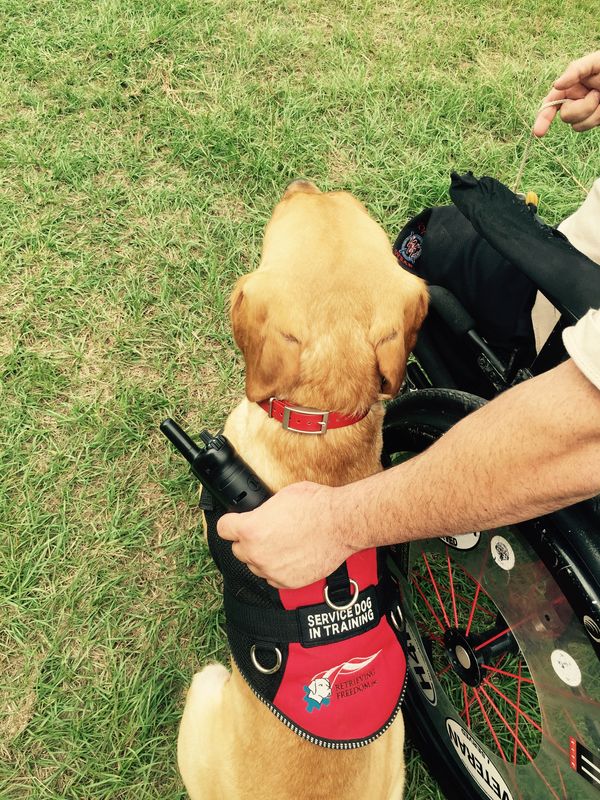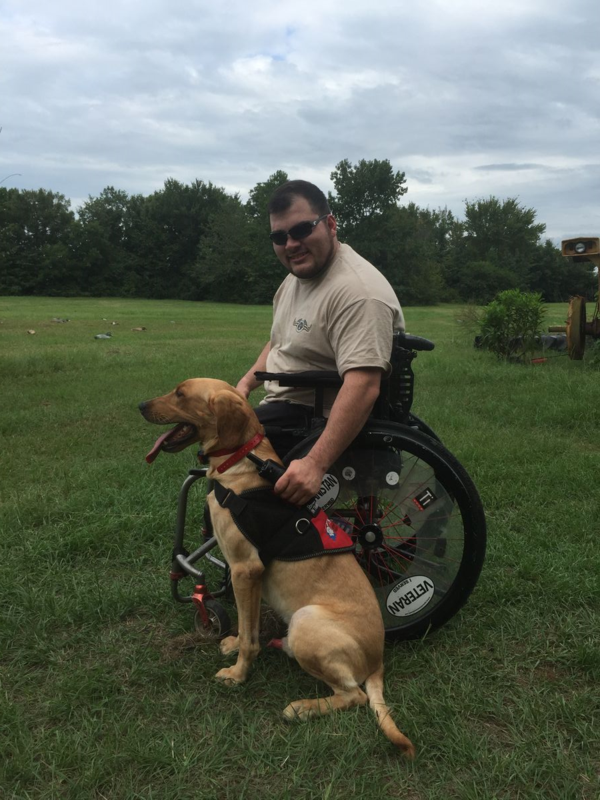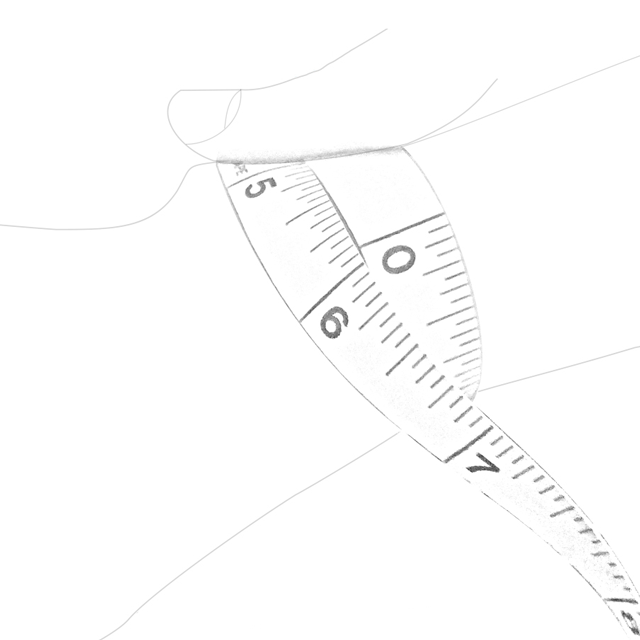Retrieving Freedom: Training Service Dogs That Hunt
When Charles Dwyer and Scott Dewey founded Retrieving Freedom back in 2011, they weren’t just looking to train service dogs for disabled veterans, autistic children and type 1 diabetics. They were looking to train service dogs that could restore disabled veterans’ love for the outdoors and help get them hunting again. Retrieving Freedom uses Garmin products to help them train some of the best and most unique service dogs out there. We wanted to hear their story, so we recently spoke with Charles to learn more about Retrieving Freedom and how they may be able to help you or someone you love.
Garmin: How did Retrieving Freedom get started?
Charles Dwyer: We’ve been a not-for-profit organization since 2011 and we train service dogs (Golden Retrievers and Labrador Retrievers) primarily for disabled veterans, children with autism, and type 1 diabetics. I actually founded the organization along with my wife Belinda and we’re based out of Mississippi. Scott Dewey is a co-founder as well and he’s based out of Waverly, Iowa. We pretty much cover the entire United States out of those two states. Scott and I are the only two trainers, but we have a huge volunteer base that fosters puppies and are involved in raising the dogs up until they are 6-8 months old, then the dogs come back into the program to start the formal obedience work and specific task training.
Our veterans can have anything from mobility issues, single, double, and even triple amputees, but the majority of the dogs we train are psychiatric support dogs that help with PTSD. Most all of the guys that we train for, not only do they have a physical disability, but also have a combination of a post traumatic stress and a traumatic brain injury situation as well.
How long does it typically take to train one of these dogs, and what are some of the tasks that you train the dogs to learn?
Training one of our service dogs is about a two-year process, and that’s assuming we start training the dog as a puppy. At around 8 weeks of age, the puppy will come in, then go to a foster family that will socialize the dog and start training basic obedience, house and crate training, teach it to go to the bathroom in a hurry, walk on a loose leash, and expose it to the public as much as possible. That gives us a really good jump-start for when the dog comes back into the program to start its official training. From then on, we train the dogs pretty much exactly the same until they are 16-18 months of age. At that time, we are able to tell what role the dog is going to be capable of fulfilling, whether it’s going to be a service dog for someone who is fully disabled, or possibly a child with autism, or a person with diabetes. After we figure that out, we will start sending the dogs different directions for task-specific training.
A dog can do literally as many as 85 tasks for a disabled person. We teach them things such as turning light switches on and off, to push wheelchairs, open and close doors, open cabinets and pull something out for you, load and unload laundry, and helping the handler grab things off of a shelf at a grocery store. We can even train them to help with disruptive behavior if someone is having a flashback, where the dog can be taught to nudge or nuzzle the handlers to ground them and bring them back to reality. Dogs can be taught to interrupt nightmares, and a lot of our folks with PTSD are really concerned about the dog being able to clear a house. If they leave their house, then come home, especially after dark, they are a little apprehensive about going in alone. So in that case, we will train the dog to go in ahead of them to do a room-by-room search and turn on as many light switches as that person wants them to, so it helps reduce the amount of stress and anxiety that someone with PTSD might have.
Many of those loving and caring instincts might come naturally to dogs, but at the same time, do you have to train the dog to act upon those instincts?
That’s exactly right. Dogs have an innate ability to read body language, so there are a lot of cues that we give off and take for granted. You and I don’t recognize it because it’s not that important to us, but dogs are constantly reading our body language. They can smell and taste emotion and feel and react to things that we take for granted. We associate some of that awareness when role playing and teach that dog to cue off it when we present a specific behavior. It’s really neat how it all works, but that’s how we train.
So when you are training for these specific behaviors, is it difficult to “fake” a certain behavior to train the dog to react a real-life situation?
Everybody has different triggers and different reactions. When we get close to the end of training and a guy wants to have a dog that helps them come back from a flashback or nightmare, we interview the family and ask them what that person looks like when he’s having that episode. What kind of body language does the person exhibit when things are starting to go wrong? We can then role-play.
Say for instance one of our individuals does a lot of rocking and it gets faster and faster until the point that he goes into a flashback. A lot of the guys we train dogs for will freeze. From there, we can chain several behaviors together when we exhibit those types of behaviors specific to a handler or recipient. So with the rocking, we can tell the dog to nudge, and we do it over a number of times so that if the dog sees the person rocking back and forth, they’ll go over and nudge him, and be like “Hey, look at me, what’s up?” We can actually get the dog to hand the recipient a leash to break that energy or focus, which will help ground them and bring them back to reality.
So how does the Garmin PRO 550 help you train the dogs?
Retrieving Freedom is a little bit different from the average service dog organization. Garmin is very aware of what it takes to train a competitive retriever because your products help accomplish that. That’s where Scott and I started. Scott was training dogs for field trials, and I was training for hunt tests.
The Garmin PRO 550 is a great tool to help the dog learn. We use it to force fetch and collar condition our dogs, and what that allows us to do is give the dog a better understanding of what we expect out of them. A lot of the organizations out there are strictly reward based. The dogs have got to want to do it, but at the same time, with the proper tool, we can help the dog understand at the next level what is right and what is wrong. The e-Collar just helps reinforce it.
When the dog is actually in the program for the official training, we’ve got a routine we go through. When it’s their turn, they’re chompin’ at the bit when it’s their turn. We work a lot of the dogs in group settings to get them socialized, or when another dog’s working, they’re on a place board or in an area of the room just watching, hanging out, and being taught to be still and quiet and wait their turn. Service dogs have to be bulletproof and have to be able to handle every environment or situation that its handler goes through over the course of a day. The person has to be able to go about their day just like you or I would, and the dog has to be able to handle that and respond appropriately.
As a matter of fact, a lot of the dogs that we train, especially for our veterans, are for hunt tests and field trials. A lot of these guys loved to hunt before they were injured and when they were looking for service dogs, a lot of the organizations they reached out to said that they wouldn’t train a dog to hunt in addition to the service dog related tasks. These guys wanted a dog that they could get back out into the outdoors with and none of these other organizations do that, so that was something very important to Scott and I when we put this organization together. We want the dog to also be a tool to help a guy reengage himself and get him into the outdoors, so we incorporate that into the dogs that we train for them.
What do you look for in a puppy that might make a good service dog?
We deal with a very diverse age range of people. If we have person who wants a service dog but also wants to hunt, we’ll look for a dog with a medium range of energy and also with a little bit of prey drive that’s controllable. Obviously the dogs live with these guys 24/7, so they have to be house dogs as well. They have to be able to turn it on and turn it off.
We will also have people that want a dog to just be a companion to help with stress out in public. One that will cover both his back and his front, and pick up things up so he doesn’t have to bend over and feel vulnerable when that happens. We look for dogs with all types of energy levels to accommodate a pretty diverse group of folks that we deal with.
How much does it typically cost to train a service dog and how is Retrieving Freedom funded?
Being a 501(c)(3), a nonprofit charitable organization, the only way we can operate is through donations, fundraisers, grants, and the generosity of the public and private sectors. These dogs take two years to train and have a price tag of about $25,000, so the average person, especially a veteran or the family of an autistic child, just doesn’t have the ability to pay that out of pocket. When we put this business plan together, we had to be a nonprofit organization, which allows us to go out and accept those tax-deductible donations and apply for grants that would help cover the majority of the production cost of these dogs.
We do ask that our recipients contribute $5,800 over the course of the two years that the dog is in training, but we don’t want them to just write us a check. What we want them to do is actually go out and fundraise with our help, and bring some public awareness to the situation. Some veterans that are suffering from PTSD don’t have the ability to go out in public and engage people, so we will go out and do the fundraising for them. We’re absolutely not going to put somebody at risk, or not accept somebody that isn’t far enough along in their recovery to go out and do that, so we have other sources that will go out and collect that part of their production cost.
If you would like to learn more about Retrieving Freedom or help fund a service dog by making a tax-deductible donation, please visit retrievingfreedom.org/.
The post Retrieving Freedom: Training Service Dogs That Hunt appeared first on Garmin Blog.
Sample Block Quote
Praesent vestibulum congue tellus at fringilla. Curabitur vitae semper sem, eu convallis est. Cras felis nunc commodo loremous convallis vitae interdum non nisl. Maecenas ac est sit amet augue pharetra convallis nec danos.
Sample Paragraph Text
Praesent vestibulum congue tellus at fringilla. Curabitur vitae semper sem, eu convallis est. Cras felis nunc commodo eu convallis vitae interdum non nisl. Maecenas ac est sit amet augue pharetra convallis nec danos dui.
Cras suscipit quam et turpis eleifend vitae malesuada magna congue. Damus id ullamcorper neque. Sed vitae mi a mi pretium aliquet ac sed elitos. Pellentesque nulla eros accumsan quis justo at tincidunt lobortis denimes loremous. Suspendisse vestibulum lectus in lectus volutpat, ut dapibus purus pulvinar. Vestibulum sit amet auctor ipsum.



